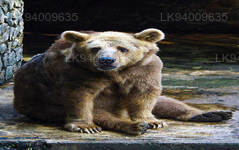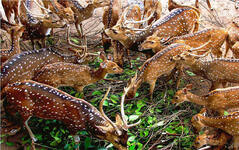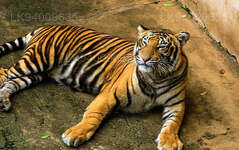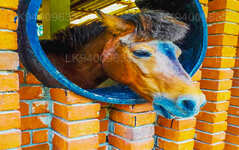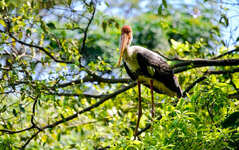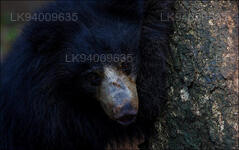
Colombo City
Colombo, the capital of Sri Lanka, is a dynamic city blending tradition and modernity. It showcases colonial architecture, lively markets, and serene Buddhist temples. With diverse cuisine, a growing skyline, and beautiful beaches, it's a vibrant hub for business, culture, and tourism, offering a gateway to explore Sri Lanka's wonders.
Zoological Garden
Zoological Garden in Sri Lanka is situated in 11 km from the Fort – Colombo, the zoo has a fine collection of animals, birds, reptiles and fish from all over the world. The aquarium is the only one of its kind in Asia and displays over 500 varieties of aquatic life. Also walk through Aviary, Reptilian, and Butterfly Park to see another amazing world of wild animals. There is daily elephant performance at 5.15 p.m. Open daily between 8.00 a.m. and 6.00 p.m.
The National Zoological Gardens, popularly known as the Zoo, is a beautifully landscaped 30 acres in which a rich collection of mammals, birds, reptiles and fishes live in harmony with Nature. Although it was begun as a menagerie in the late nineteen twenties by John Hagenbeck a member of the famous show-business family from Hamburg, Germany, the Zoo was officially recognized as such only in July 1936 when the Government purchased it. John Hardenberg, who initially started the Dehiwala Zoo, belongs to a family engaged in animal circuses. He collected and kept the animals in this premises for trade. Mr Hargenberg exported wild animals to Europe to his brother Carl Hargenberg who was one of the biggest animal dealers in Europe at that time. It was then a mere 9 acres in extent but has steadily grown into a beautiful Zoological Garden exhibiting animals in naturalistic setting using modern methods of husbandry. Over 1.2 million visitors pass through the Zoo’s gates every year for it caters to young and old alike and is a source of healthy recreation to the average citizen especially those who come in family groups. To all its visitors the Zoo is quite tranquil haven into which they could withdraw from the bustle of urban life.
To hold the animals before exporting them to Europe he bought 05 acres of land at Dehiwala at the beginning of the century. This became quite popular among the residents of the area. The total area of the collection centre was increased to 11 acres to hold the animals received. Subsequently, the centre was taken over by the government in 1936. The extent of the land was increased gradually to the present status of 25 acres.Zoological Garden of Highlights
An unforgettable tropical aquatic adventure
The Dehiwala Zoo Aquarium is widely recognized as a popular tourist attraction since it harbours substantial collection of aquatic life. It consists of an unparalleled range of aquatic life including freshwater, marine and brackish water fauna and flora, from different ecosystems around the globe. Visitors will witness rare and fascinating species such as Arapaima (The largest freshwater fish in the world), Lung Fish (A fish that has real “lungs” as of human beings), Polypterus, (a living fossil), large catfishes, performing sea lions and penguins from the different parts of the world.
Giving the maximum viewing facilities to the visitors the aquarium bears some aquariums where the public can watch them by the sides. The aquarium which is home to a diverse collection of over 100 varieties of fish and invertebrates as well as aquatic plants are exhibited in near-natural conditions.
At the nighttime these living aquatic species are exhibited under the lighted natural and landscaped environment and it is guaranteed to be both a memorable educational experience as well as a delightful meeting with the wonders of the aquatic world.
Opening hours for night expedition
• Daily -06.30 pm-08.15pm.
• Last admission -07.45pm.
• Sea Lion Show -07.45pm.
About Colombo District
Colombo is the largest city and commercial capital of Sri Lanka. It is located on the west coast of the island and adjacent to Sri Jayewardenepura Kotte, the capital city of Sri Lanka. Colombo is a busy and vibrant city with a mixture of modern life and colonial buildings and ruins and a city population of 647,100.The Colombo Metropolitan Region, defined by the districts of Colombo, Gampaha and Kalutara, has an estimated population of 5,648,000, and covers an area of 3,694.20 km²
Colombo is a multi-ethnic, multi-cultural city. It is the most populous city in Sri Lanka, with 642,163 people living within the city limits. The population of Colombo is a mix of numerous ethnic groups, mainly Sinhalese, Moors and Tamils. There are also small communities of people with Chinese, Portuguese, Dutch, Malay and Indian origins living in the city, as well as numerous European expatriates.
The great majority of Sri Lankan corporations have their head offices in Colombo. Some of the industries include chemicals, textiles, glass, cement, leather goods, furniture, and jewellery. In the city center is located South Asia's second tallest building - The World Trade Centre.
About Western Province
The Western Province is the most densely populated province of Sri Lanka. It is home to the legislative capital Sri Jayawardenepura Kotte as well to Colombo, the nation's administrative and business center. Western Province is divided into 3 main districts called Colombo (642 km²), Gampaha (1,386.6 km²) and Kalutara (1,606 km²) districts. As Sri Lanka's economic hub, all the major local and international corporations have their presence in the city and so do all the major designer and high street retailers, so be ready to indulge in some retail therapy in western province.
Having the highest population in the all the provinces, the almost all the premier educational institutions in the island are located in western province. Universities in the province include the University of Colombo, the University of Sri Jayewardenepura, University of Kelaniya, Open University, Sri Lanka, Buddhist and Pali University of Sri Lanka, General Sir John Kotelawala Defence University and University of Moratuwa .Western province has the largest amount of schools in the country, which includes National, Provincial, Private and International schools.

